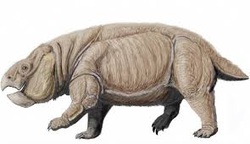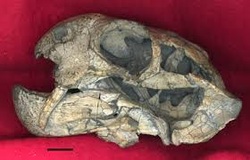
The 240-million-year-old site is the world's oldest public toilet and the first evidence that ancient reptiles shared collective dumping grounds.
Here's something I didn't know: Nowadays, elephants, antelopes and horses defecate in socially agreed hotspots to mark territory and reduce the spread of parasites. The hoses in the field outside my window poo wherever they stand. Perhaps domesticated animals have given up the tendency to choose where they defecate in exchange for board and lodgings.
But the herd animals' best efforts are dwarfed by the enormous scale of this latrine - which breaks the previous record oldest toilet by 220 million years. Piles of fossil dung, some as wide as 40cm and weighing several kilograms, were found in seven massive patches across the Chanares Formation in La Rioja province. Apparently, fine ash covered the site and preserved the remains.

The shared latrine strategy suggests they were gregarious, herd animals, who had good reasons to poo strategically. Firstly, it was important to avoid parasites. 'You don't poo where you eat', as the saying goes. But the huge pile also warns predators about the size of the herd.
What would aliens think of our sewers? Sometimes, I wonder if mankind will run out of space for all their cast-offs.

 RSS Feed
RSS Feed






